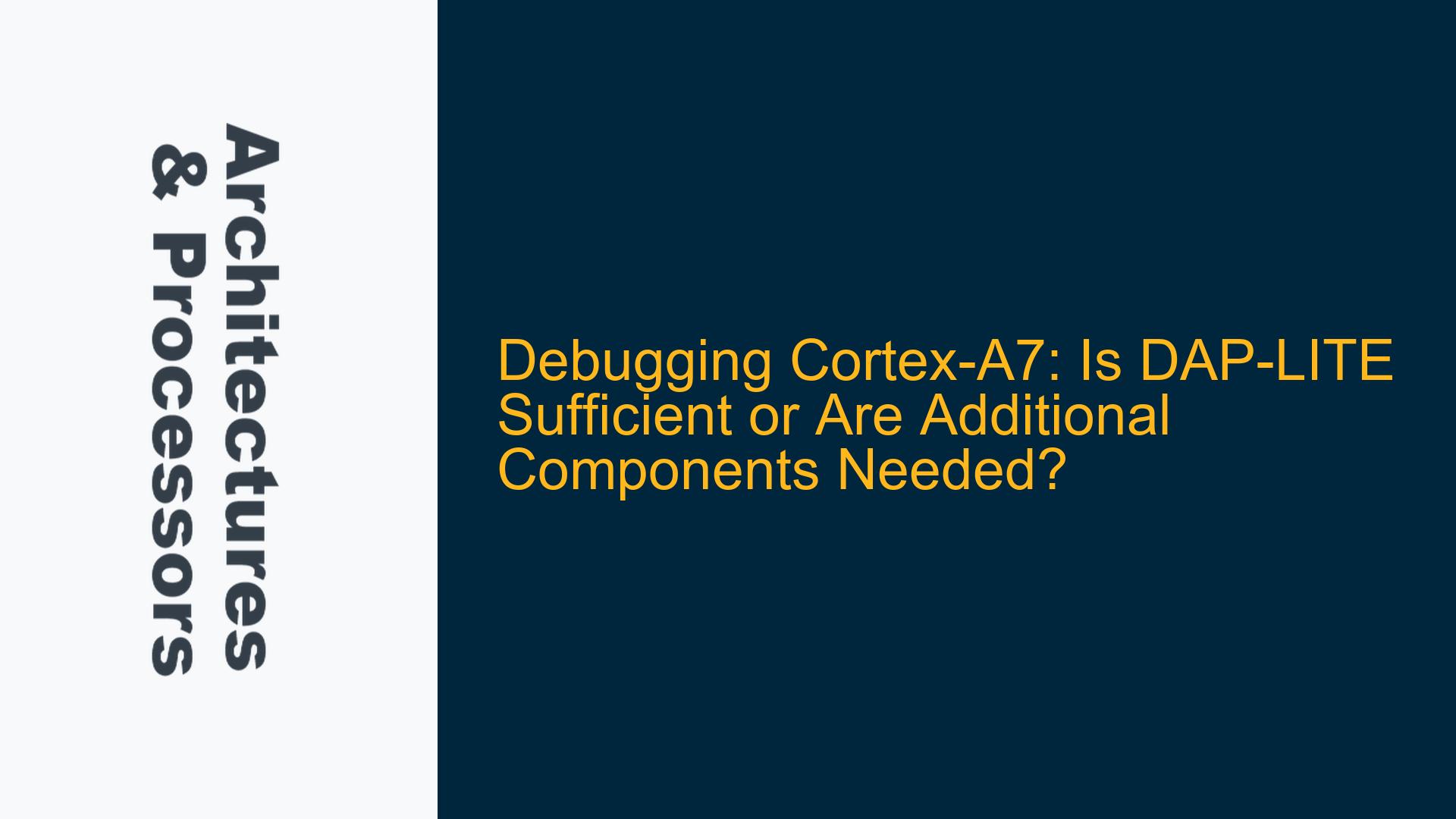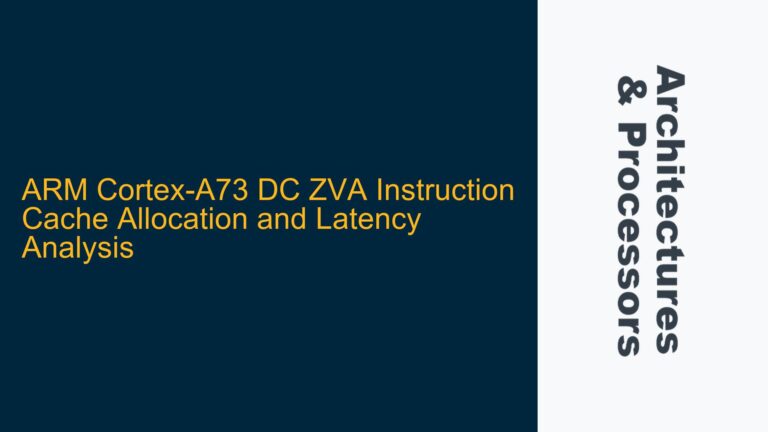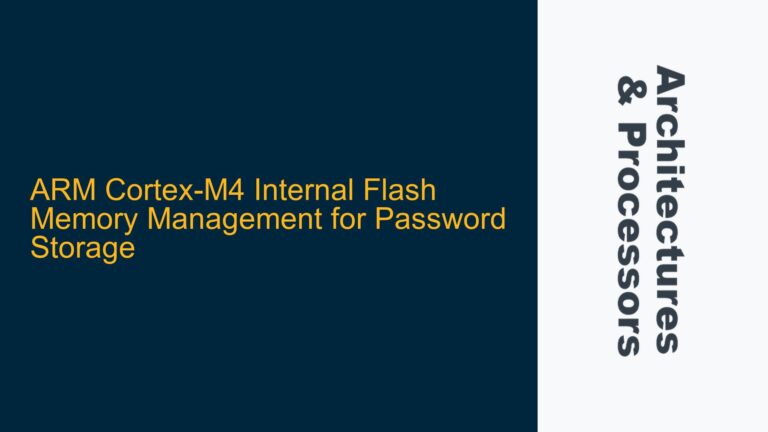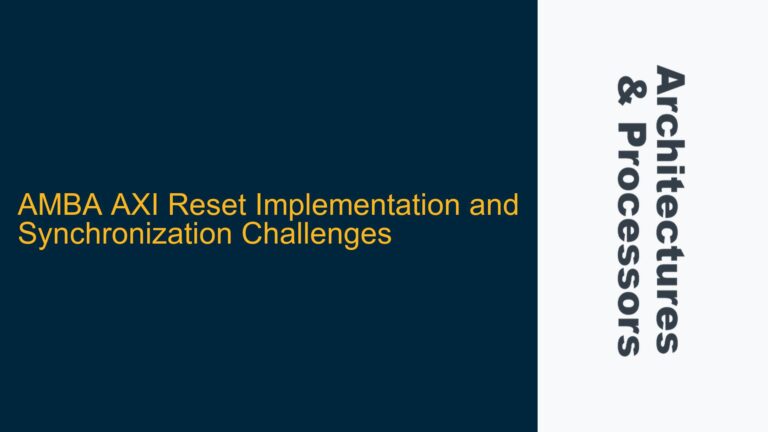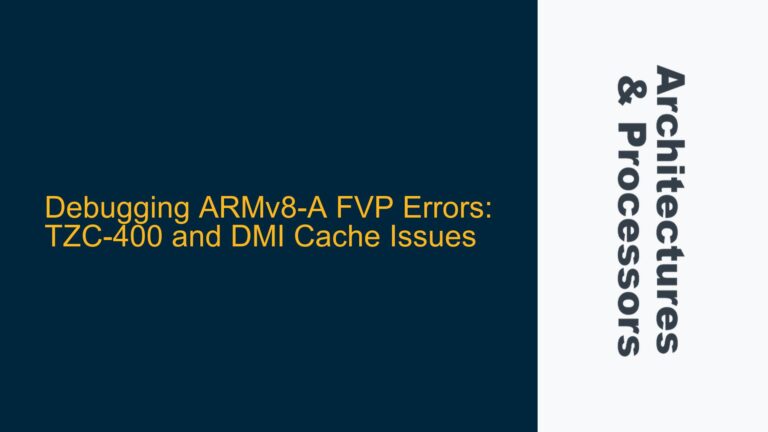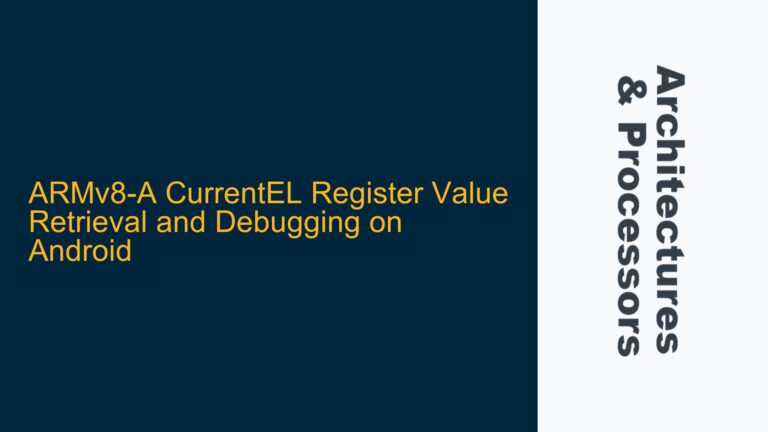Cortex-A7 Debug Requirements and DAP-LITE Capabilities
The Cortex-A7 processor, a member of ARM’s Cortex-A family, is widely used in embedded systems due to its balance of performance and power efficiency. Debugging such a processor is a critical aspect of SoC development, and the Debug Access Port (DAP) is a key component in this process. The DAP-LITE is a minimal implementation of the DAP, designed to provide basic debug capabilities. However, the question arises whether DAP-LITE is sufficient for debugging the Cortex-A7, especially in more complex designs.
The Cortex-A7 supports a range of debug features, including breakpoints, watchpoints, and access to core registers. These features are essential for diagnosing issues during development and ensuring the correct operation of the software. The DAP-LITE provides access to these debug features through the ARM CoreSight architecture, which is a scalable and modular system for debug and trace.
However, the DAP-LITE has limitations. It does not support trace capabilities, which are crucial for understanding the execution flow of the processor and diagnosing complex issues. Trace allows developers to see the sequence of instructions executed by the processor, which is invaluable for identifying race conditions, deadlocks, and other concurrency issues. Additionally, the DAP-LITE may not provide sufficient bandwidth for debugging multi-core systems, where multiple Cortex-A7 cores are used in a single SoC.
In summary, while the DAP-LITE can provide basic debug capabilities for the Cortex-A7, it may not be sufficient for more complex designs, especially those requiring trace or multi-core debugging. The next section will explore the possible causes of these limitations and why additional components might be necessary.
Limitations of DAP-LITE in Multi-Core and Trace Scenarios
The limitations of DAP-LITE become apparent when considering more complex debugging scenarios, particularly in multi-core systems and when trace capabilities are required. In a multi-core system, each Cortex-A7 core may need to be debugged simultaneously, which can strain the resources of the DAP-LITE. The DAP-LITE may not have the necessary bandwidth to handle the debug traffic from multiple cores, leading to potential bottlenecks and reduced debug performance.
Trace capabilities are another area where the DAP-LITE falls short. Trace is essential for capturing the execution flow of the processor, which is critical for diagnosing complex issues such as race conditions, deadlocks, and other concurrency problems. Without trace, developers are limited to breakpoints and watchpoints, which may not provide enough information to diagnose these issues effectively. The DAP-LITE does not support trace, which means that developers would need to use additional components, such as the Embedded Trace Macrocell (ETM), to capture trace data.
Another consideration is the integration of the DAP-LITE with other components in the SoC. The DAP-LITE is designed to be a minimal implementation, which means it may not have the necessary features to integrate seamlessly with other components, such as the System Memory Management Unit (SMMU) or the Generic Interrupt Controller (GIC). This can lead to integration issues, where the debug capabilities of the DAP-LITE are not fully utilized due to limitations in the overall system design.
In conclusion, the DAP-LITE may not be sufficient for debugging the Cortex-A7 in more complex designs, particularly those requiring multi-core debugging or trace capabilities. The next section will provide detailed troubleshooting steps, solutions, and fixes for these issues, including the use of additional components from the ARM CoreSight architecture.
Implementing Advanced Debug Solutions with CoreSight Components
To address the limitations of the DAP-LITE, developers can implement advanced debug solutions using additional components from the ARM CoreSight architecture. The CoreSight architecture provides a scalable and modular system for debug and trace, which can be tailored to the specific needs of the SoC design.
One of the key components that can be added to enhance debug capabilities is the Embedded Trace Macrocell (ETM). The ETM provides trace capabilities, allowing developers to capture the execution flow of the Cortex-A7 processor. This is essential for diagnosing complex issues such as race conditions, deadlocks, and other concurrency problems. The ETM can be configured to capture different levels of trace information, from instruction trace to data trace, depending on the needs of the developer.
Another important component is the Debug Access Port (DAP) itself, which can be implemented in a more advanced form than the DAP-LITE. The full DAP provides additional features, such as support for multi-core debugging and higher bandwidth for debug traffic. This is particularly important in multi-core systems, where each Cortex-A7 core may need to be debugged simultaneously. The full DAP can handle the increased debug traffic, ensuring that developers have the necessary visibility into the operation of each core.
In addition to the ETM and DAP, other CoreSight components can be used to enhance the debug capabilities of the SoC. For example, the System Trace Macrocell (STM) can be used to capture system-level trace information, providing a broader view of the operation of the SoC. The Trace Memory Controller (TMC) can be used to manage the storage of trace data, ensuring that it is captured efficiently and can be accessed easily by developers.
When implementing these advanced debug solutions, it is important to consider the integration of the components with the rest of the SoC. The CoreSight architecture is designed to be modular, which means that components can be added or removed as needed. However, careful planning is required to ensure that the components are integrated seamlessly and that the debug capabilities are fully utilized.
In summary, while the DAP-LITE provides basic debug capabilities for the Cortex-A7, it may not be sufficient for more complex designs. By implementing advanced debug solutions using additional CoreSight components, developers can enhance the debug capabilities of their SoC, ensuring that they have the necessary visibility into the operation of the Cortex-A7 processor. This includes the use of the ETM for trace capabilities, the full DAP for multi-core debugging, and other CoreSight components for system-level trace and trace data management.
In conclusion, the choice of debug components for the Cortex-A7 depends on the specific requirements of the SoC design. For simple designs, the DAP-LITE may be sufficient, but for more complex designs, additional components from the CoreSight architecture are likely to be necessary. By carefully considering the debug requirements and implementing the appropriate components, developers can ensure that they have the necessary tools to diagnose and resolve issues during the development of their SoC.
